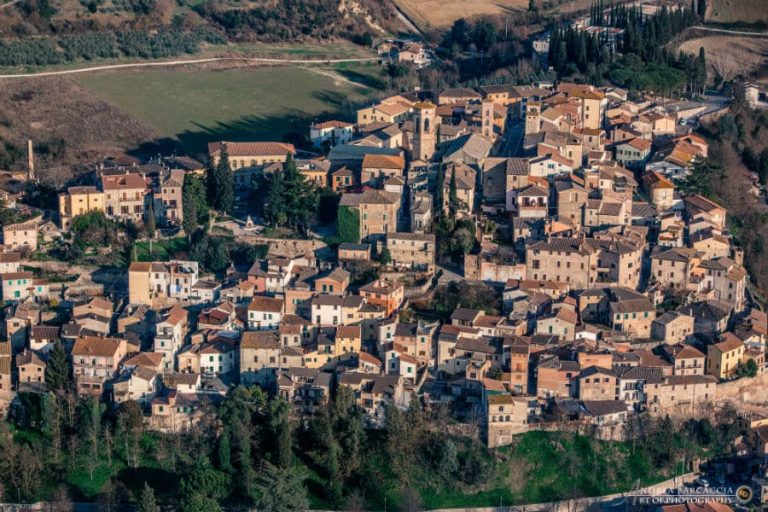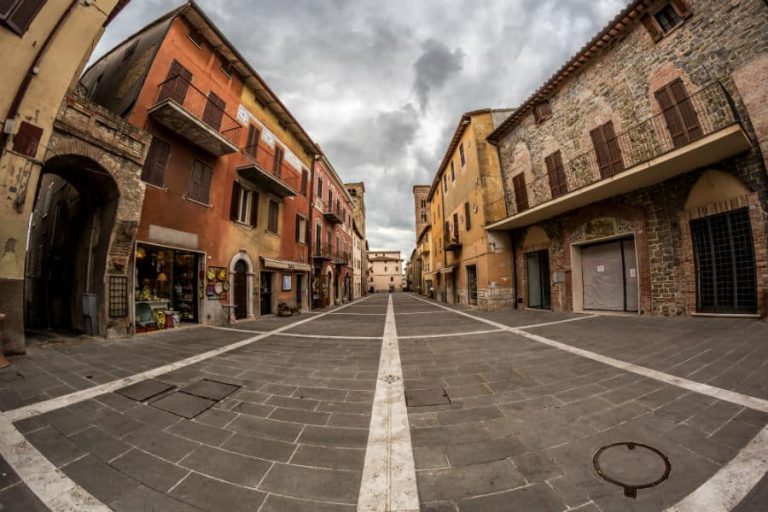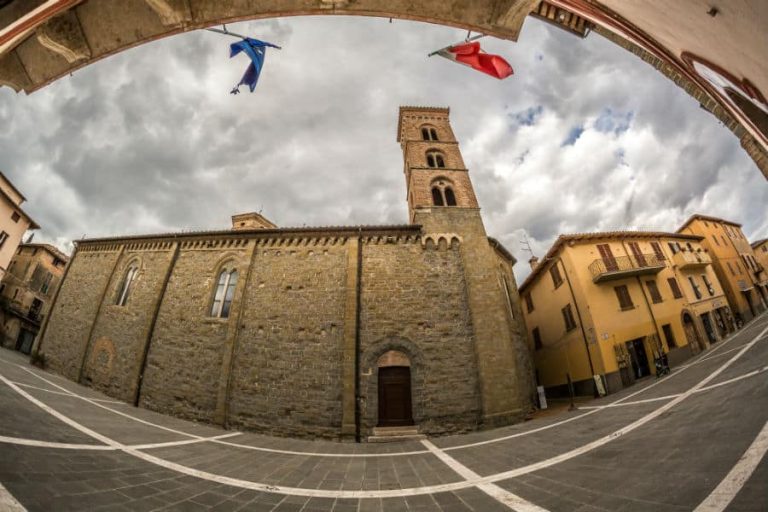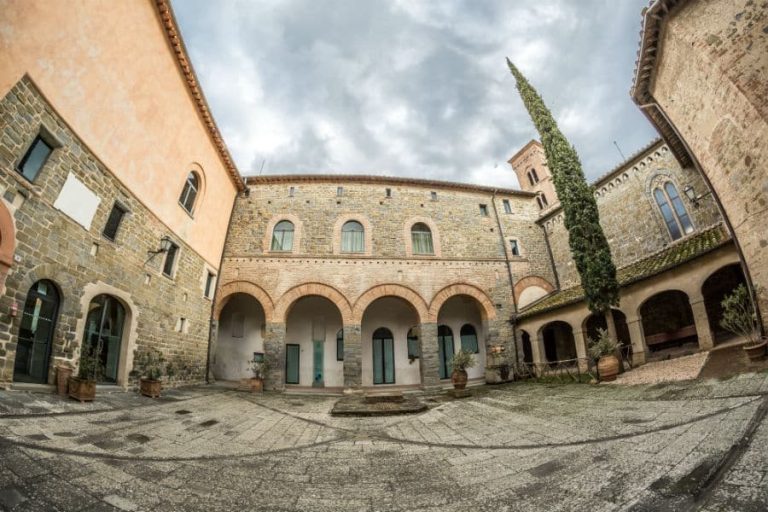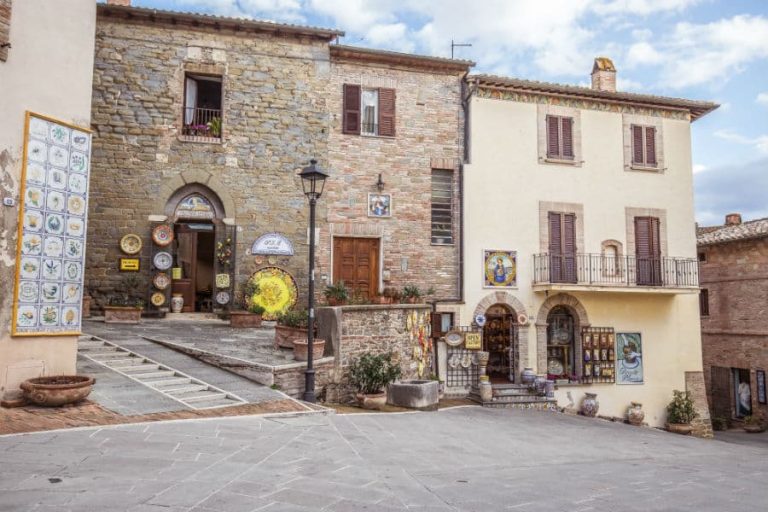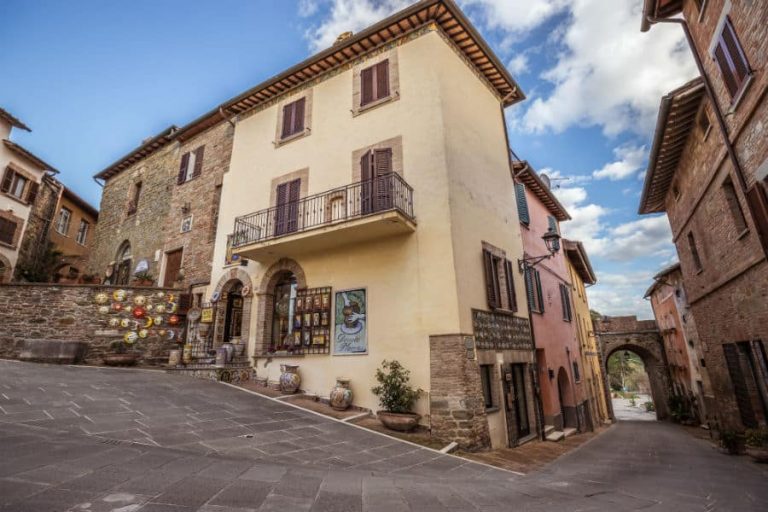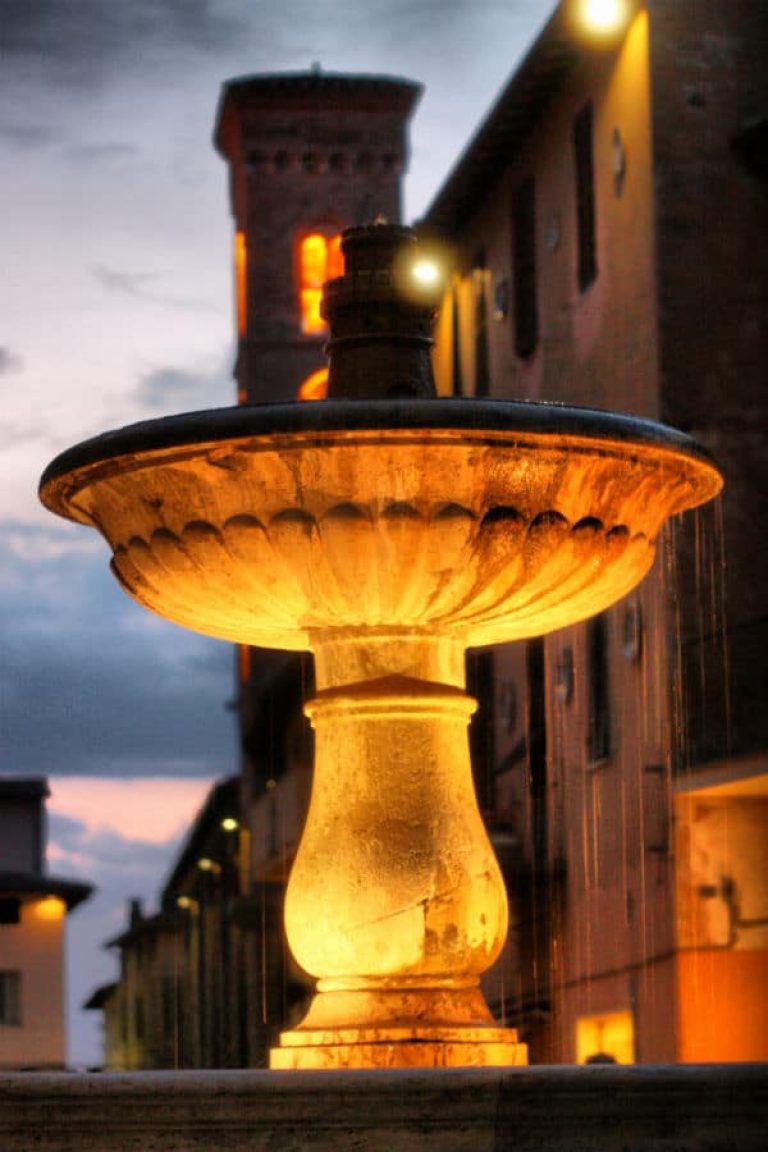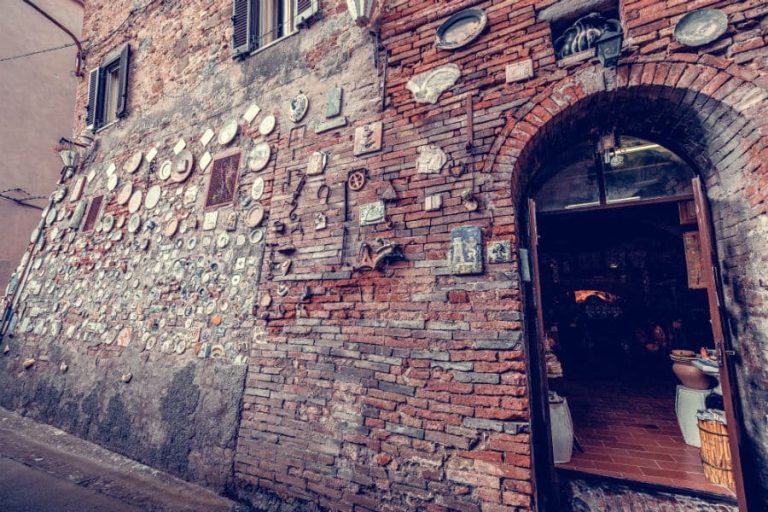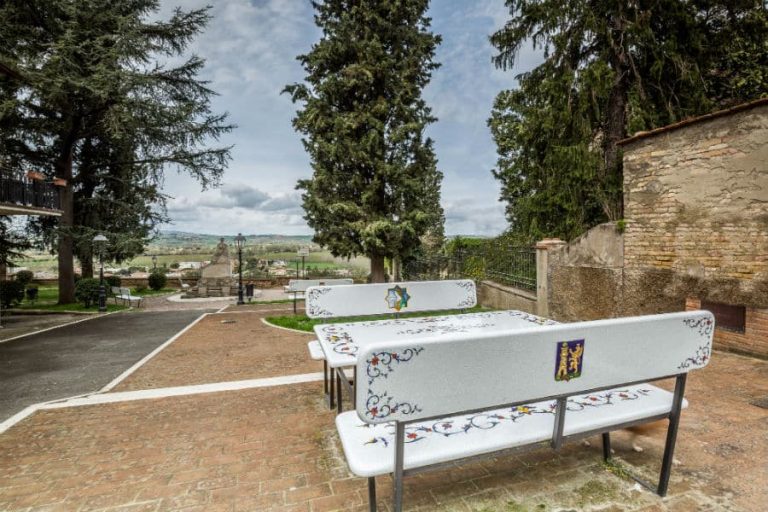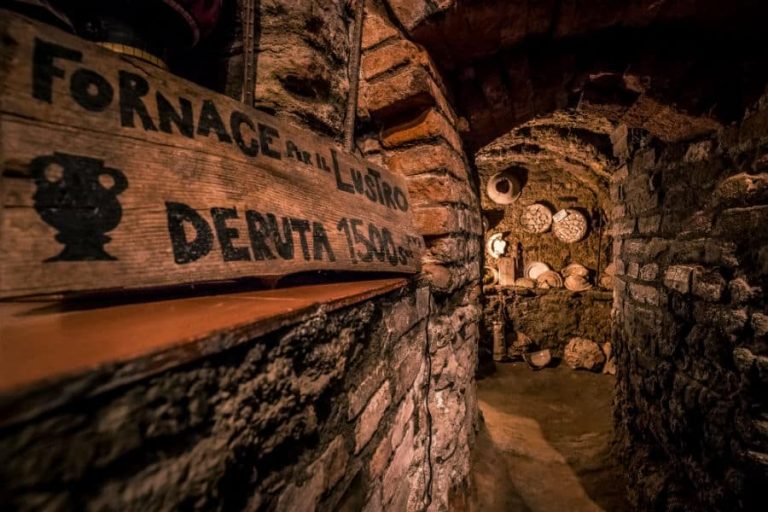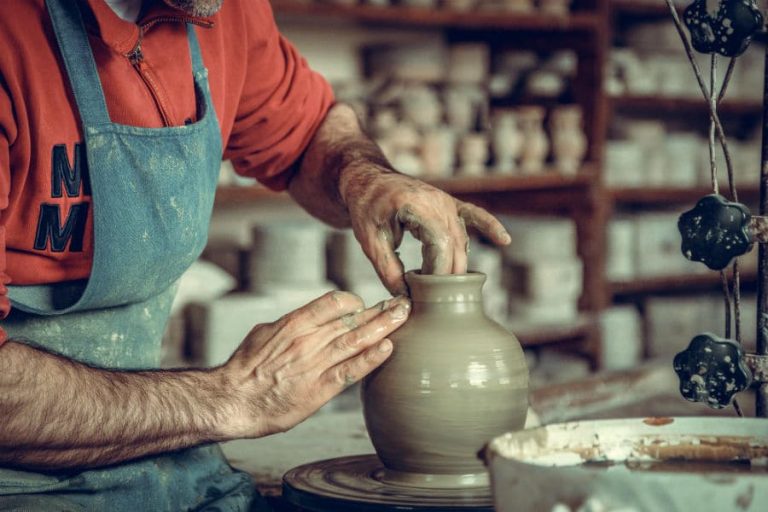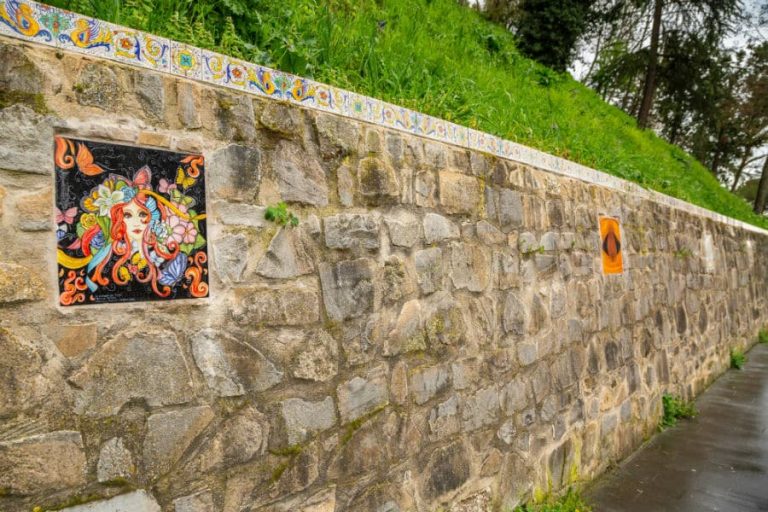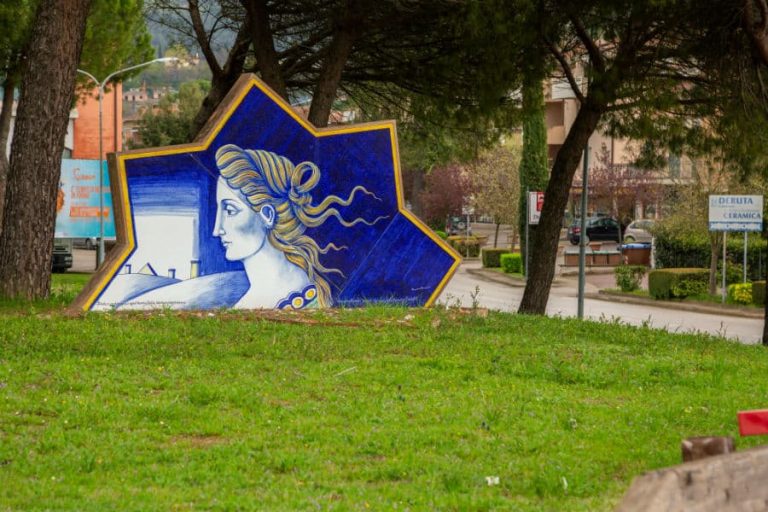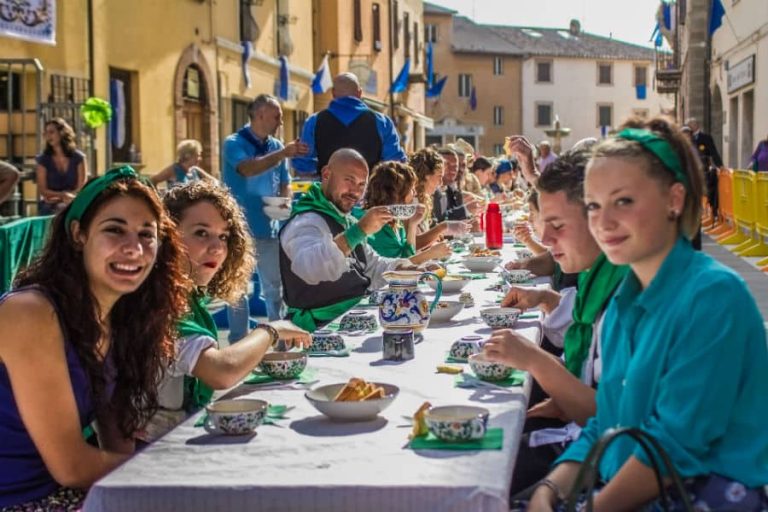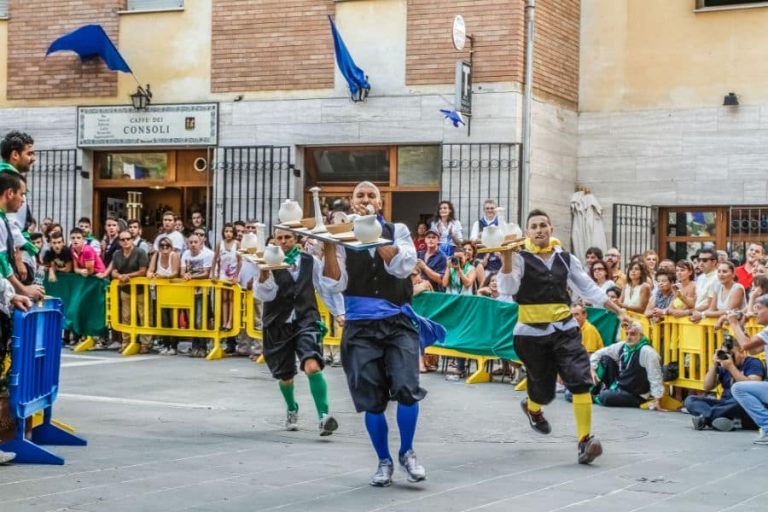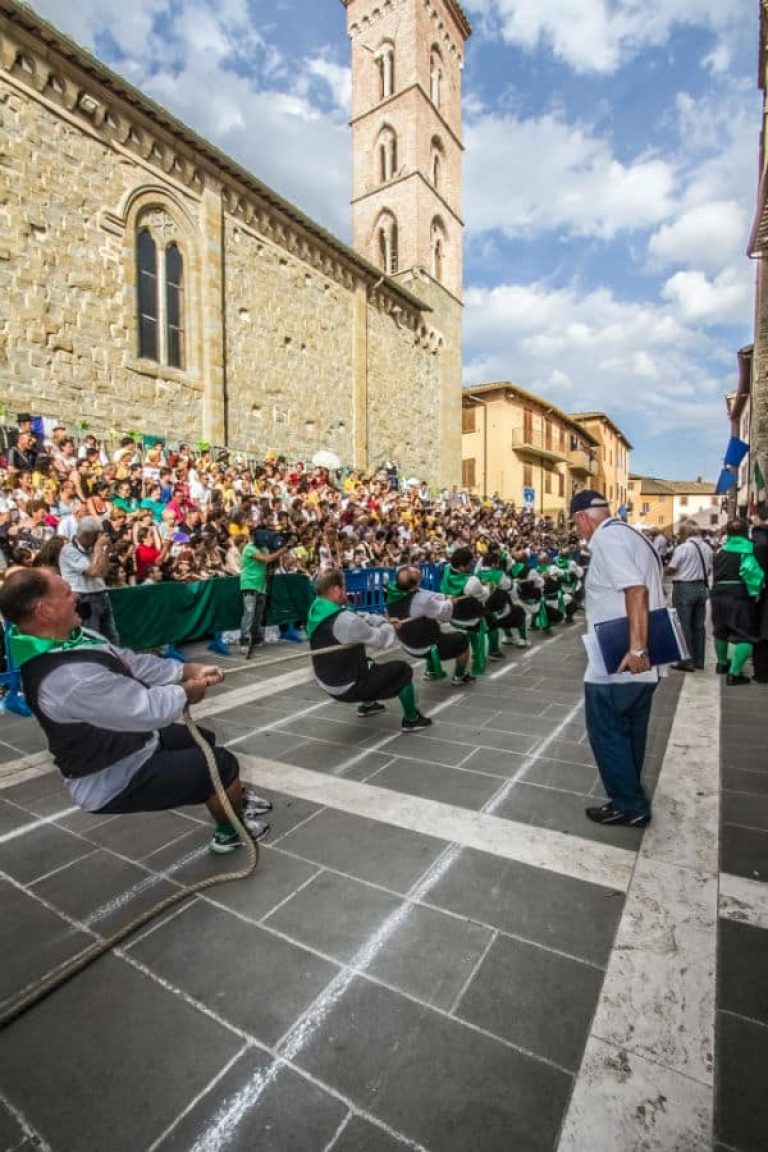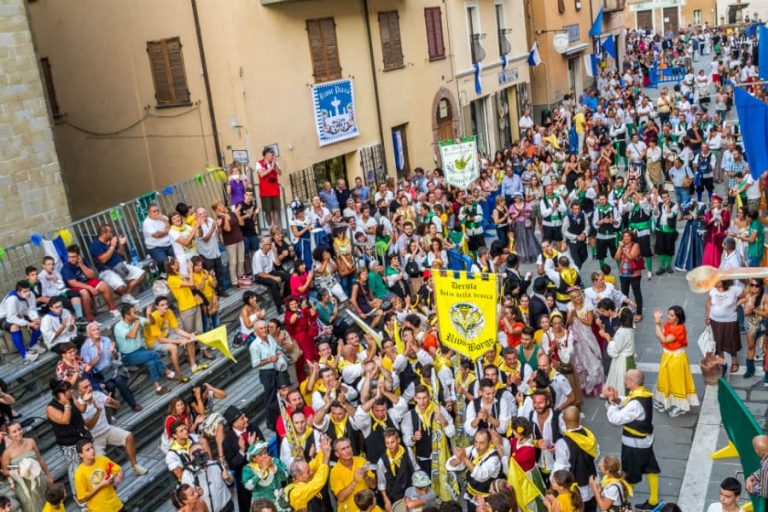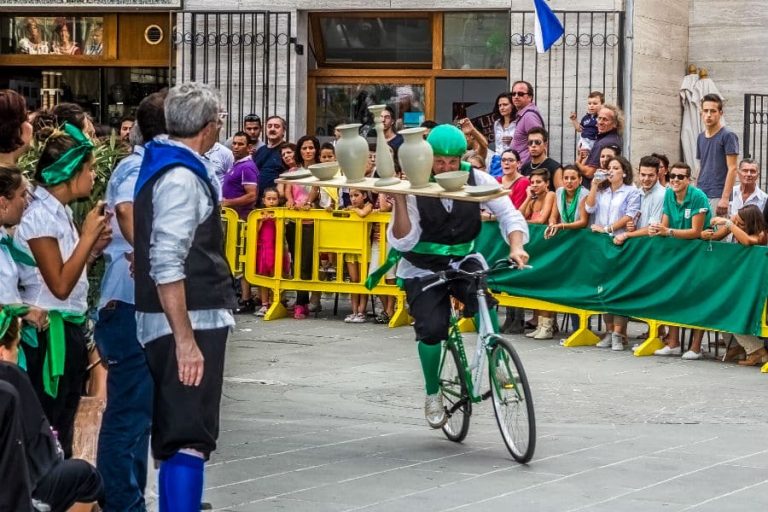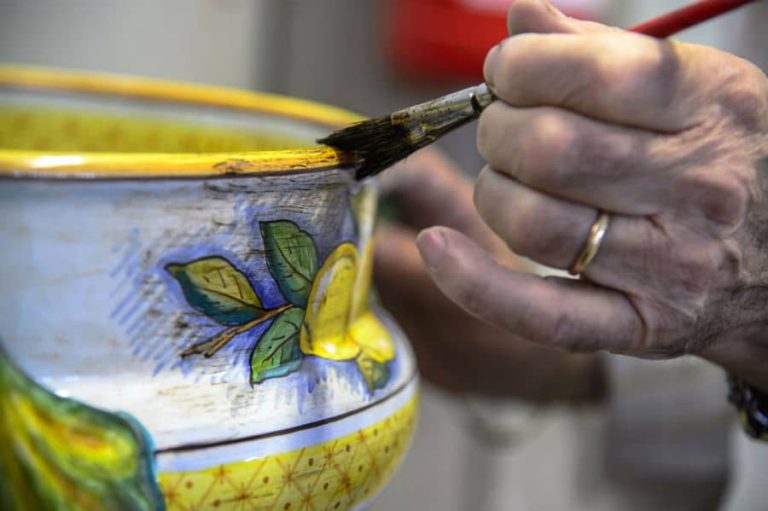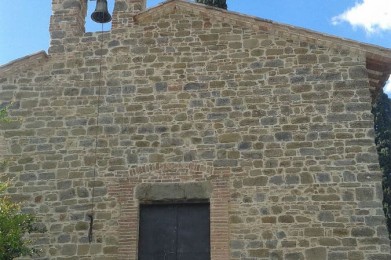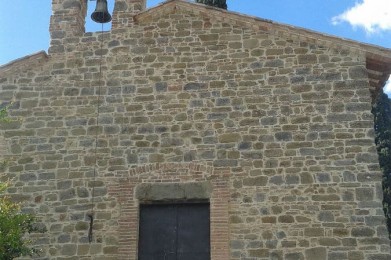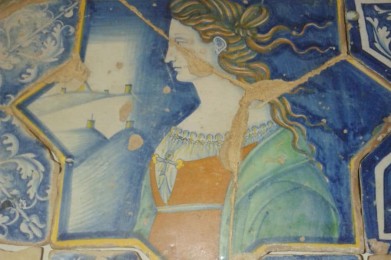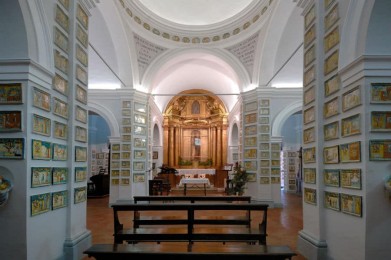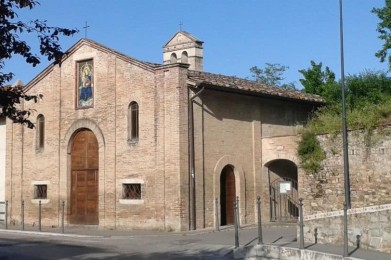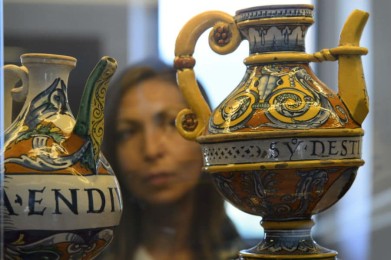the origin most likely of the toponym is Latin díruta, past participle of diruere, demolished, ruined and steep. From these meanings seems to have originated the name Déruta. From the discovery of a fragment of decorative plate of the VII century, it can be traced back to the presence of a village flourishing and operational already in the Early Middle Ages.
Toward the year 1000, the Emperor Otto III ceded the town to some Germanic noble, giving them the title of Nobiles de Deruta. In the XIII century Deruta has its own statute (lost), followed in 1456 by a new document in the vernacular. The latter provides for the presence in the castle, beyond that of a podestà sent from Perugia, four boni omini, elected from among the inhabitants. The continuous plagues of the second half of the Fifteenth century destroyed the population, so as to result in a reduction of the walls.
During the War of the salt (1540), Deruta, after being deployed against the Pope, even gave the keys to the country to Pier Luigi Farnese, condottiere in the pay of the pope, but nevertheless experienced ambushes and devastation. The subjection of Perugia to the Church brought the town even a long period of peace. It is precisely in these years that you had the maximum development of the workmanship of the majolica artistic activity which, in the course of the centuries, has made known Deruta in the world.
The submission to the papal government lasted until 1860, part two short interruptions related to French domination: between 1798 and 1800 Deruta was included in the Roman Republic as fourth canton of the Department of Trasimeno and, between 1809 and 1814, was part of the Napoleonic Empire.
Certainly deserve a visit the Regional Museum of the ceramics, the Church of San Francesco, the Sanctuary of the Madonna of the bath, the Church of Sant'Angelo, the Church of the Madonna della Cerasa or of Divine Love, the Madonna delle Piaggie and Santa Maria di Roncione in locality Castelleone.
Close to the old city walls lies the village more old from where, going up to three doors of the ancient defensive system, access to the historical center. The main entrance is called Porta Sant'Angelo, the other minors are called Porta Perugina and Porta del Borgo or Tuderte. From the historic center dominate the two towers civic and bell tower of the Church of San Francesco.
The handicrafts from Deruta identifies himself with the production of artistic majolica. The most ancient document on this form of art dates back to 12 August 1290. In this period are produced objects of common use, with scarce decorations; the dominant colors are green ramina obtained by the oxidation of copper and manganese brown.


